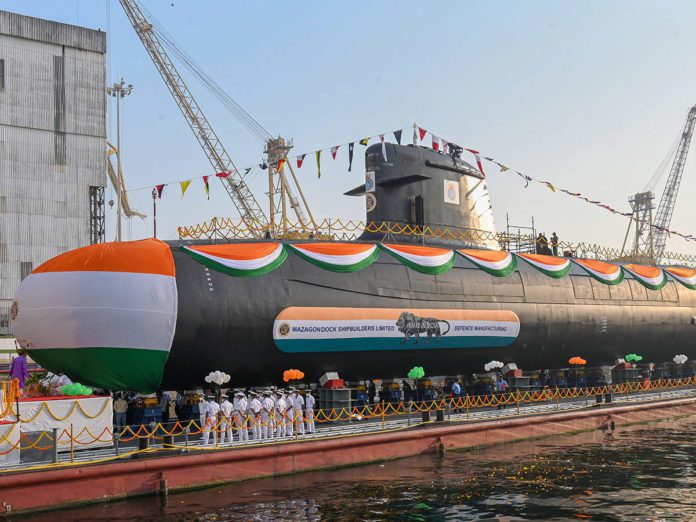The fifth Scorpene class conventional submarine, INS Vagir, was commissioned into the Indian Navy.

The INS Vagir
- The latest submarine is named after the former Vagir, a submarine that served in the Navy from 1973 to 2001 and performed a variety of operational missions.
- The new Vagir’s construction began in 2009, and it made its first sea sortie in February of this year.
- The submarine, also known as Sand Shark, was delivered to the Indian Navy in December 2022.
Class: Kalvari
- A class of ships is a group of vessels that share the same make, purpose, and displacement.
- Vagir is a submarine in the Kalvari class, which also includes the INS Kalvari, INS Khanderi, INS Karanj, INS Vela, and INS Vagsheer.
- Kalvari and Khanderi were commissioned in 2017 and 2019, respectively, while Vela and Karanj were inducted in 2021.
- Vagir has now been commissioned, and Vagsheer will be inducted next year after being launched in 2022.
- The current Kalvari-class submarines are named after decommissioned Kalvari classes, which included the Kalvari, Khanderi, Karanj, and Vela classes, which included the Vela, Vagir, and Vagshir.
INS Vagir’s capabilities and technical specifications
- Submarines of the Kalavari class have an estimated endurance of 50 days.
- They can also engage in a variety of naval combat operations such as anti-warship and anti-submarine operations, intelligence gathering and surveillance, and naval mine laying.
- These submarines are approximately 220 feet long and 40 feet tall. When surfaced, it can reach speeds of 11 knots (20 km/h) and 20 knots (37 km/h) when submerged.
- Modern Scorpene class submarines have what is known as Air Independent Propulsion (AIP), which allows non-nuclear submarines to operate for extended periods of time without access to surface oxygen.
Strategic importance
- Currently, India has less number of submarines than what is required with some more of those from both types being at various stages of construction.
- India has one nuclear-powered submarine in the Chakra class and two other nuclear-powered vessels in the Arihant class.
- There are also submarines from the three Diesel Electric classes — Kalvari, Shishumar, and Sindhughosh — some of which are old.
- Nuclear-powered and diesel-electric submarines play specific roles in Carrier Battle Groups, which are formations of ships and submarines led by Aircraft Carriers.
- According to the basic principles of submarine deployment and the minimum requirement for India to create strategic deterrence, India must have a specific number of submarines of both types in active service.
Source: https://pib.gov.in/PressReleasePage.aspx?PRID=1893036#:~:text=Indian%20Navy's%20fifth%20stealth%20Scorpene,Chief%20Guest%20for%20the%20ceremony.
